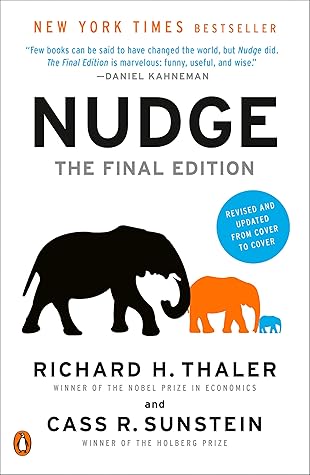More on this book
Community
Kindle Notes & Highlights
A choice architect has the responsibility for organizing the context in which people make decisions.
The paternalistic aspect lies in the claim that it is legitimate for choice architects to try to influence people’s behavior in order to make their lives longer, healthier, and better. In other words, we argue for self-conscious efforts, by institutions in the private sector and by government, to steer people’s choices in directions that will improve their lives.
A nudge, as we will use the term, is any aspect of the choice architecture that alters people’s behavior in a predictable way without forbidding any options or significantly changing their economic incentives.
The false assumption is that almost all people, almost all the time, make choices that are in their best interest or at the very least are better than the choices that would be made by someone else. We claim that this assumption is false—indeed, obviously false. In fact, we do not think that anyone actually believes it on reflection.
The first misconception is that it is possible to avoid influencing people’s choices.
The second misconception is that paternalism always involves coercion.
Decades after Sherif’s work, social scientists uncovered the confidence heuristic: people tend to think that confident speakers must be correct.
So, if you remember just one thing from this book, let it be this. If you want to encourage people to do something, Make It Easy.
Lotteries are just one way to provide positive reinforcement. Their power comes from the fact that the chance of winning the prize is overvalued.
Perhaps the most basic principle of good choice architecture is our mantra: Make It Easy. If you want to encourage some behavior, figure out why people aren’t doing it already, and eliminate the barriers that are standing in their way. If you want people to obtain a driver’s license or get vaccinated, make it simple for them, above all by increasing convenience. Of course, this principle has an obvious corollary: if you want to discourage some behavior, make it harder by creating barriers. If you want to make it harder for people to vote, forbid voting by mail and early voting, and reduce the
...more


